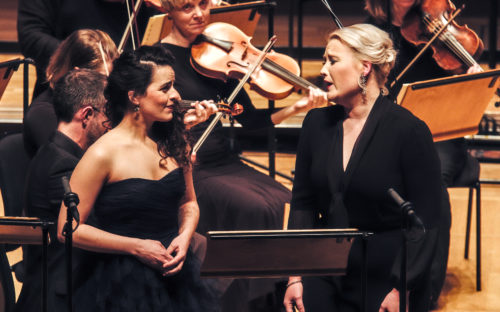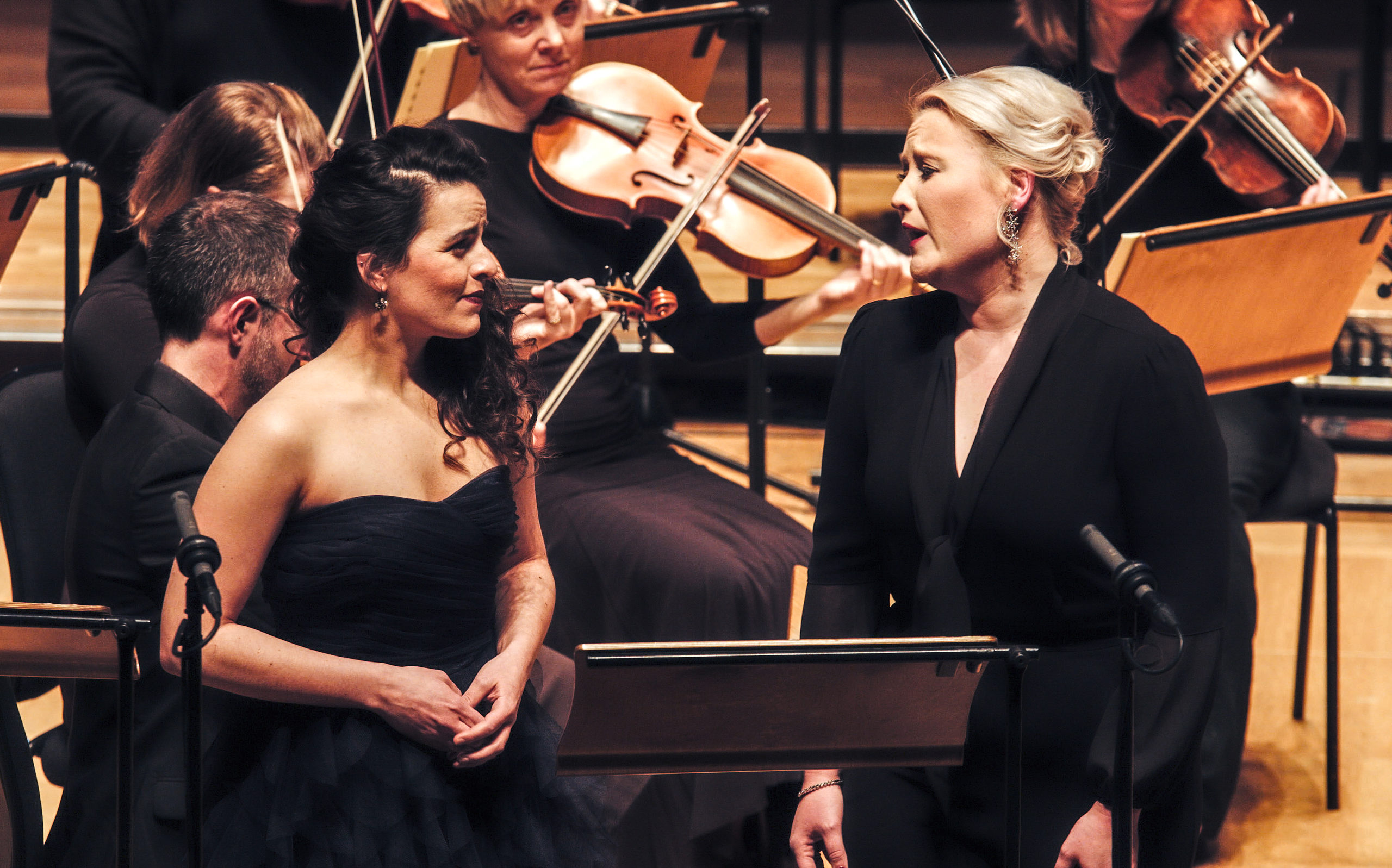 United Kingdom Various composers – Mozart In Italy [2]: Cadogan Hall, London, 7.3.2020. (CC)
United Kingdom Various composers – Mozart In Italy [2]: Cadogan Hall, London, 7.3.2020. (CC)

Talk: Mozart and Italian Sacred Music: Cliff Eisen (speaker) with the Chamber Choir of King’s College, Choir, London / Edward Jones (conductor). Works by Allegri, Martini, de Ligniville and Mozart. 3.30pm
Panel Discussion: Mozart’s 1770 Italian Tour with James Jolly, Cliff Eisen and Ian Page. 5pm
Concert 2: The Road to Rome: Kiandra Howarth, Sarah Aristidou (sopranos), The Mozartists / Ian Page (conductor).
Niccolò Piccinni – Cesare in Egitto (1769): ‘San Romano, e sono amante’ (KH)
Ignazio Celoniati – Didone abbandonata (c.1769): ‘Prendi l’estreme addio’ (SA, KH); ‘Se non adio dal mio bene’ (SA)
Mozart – Symphony No.10 in G, K74; Arias: ‘Se ardire e speranza’, K 82/731 (1770) (KH); ‘Fra cento affanni e cento’, K 88/73c (1770) (SA); Contradanse in B flat, K123/73g (1770). Minuet in E flat, K122/73t (1770); Mitridate, re di Ponto: ‘Se viver non degg’io’ (1770, original version, KH & SA)
Josef Mysliveček – La Nitteti (1756): Overture; ‘Povero cor, tu palpiti’ (SA); ‘Se la cagion saprete’ (KH)
The ability to immerse oneself in a sliver of Mozart’s life for a full weekend is a remarkably satisfying activity. A sort of ‘Total Immersion’, as the Barbican would say, but with a completely different slant. So the event with chamber choir, an illustrated talk, by Cliff Eisen (who had given a lecture the day before also) offered not only a brief examination of Mozart’s relationship to Italian sacred music, but also substantial illustration, including a fast and light account of the challenging Allegri Miserere Mozart so famously transcribed after hearing a performance at the Vatican Chapel. The King’s College Chamber Choir of the University of London presented Mozart Puzzle Canons (from K89), Quaerite primum Dominum Dei K86, and the Miserere, K85. To contextualise this little-heard but lovely music, a fascinating excerpt from de Ligniville’s Stabat Mater and a very pleasant ‘Crucifixus’ excerpt from a Credo by Martini, with a solo violin contribution. Performance standards might not have been of the very highest, but the opportunity to experience the music Mozart encountered, and some of his decidedly lesser-known works, was valuable.
James Jolly, Editor-in-Chief of Gramophone magazine, chaired a discussion on Mozart’s 1770 Italian Tour. One of the guests, Sergio Durante, Professor of Musicology at the University of Padua, was unable to attend for very understandable epidemiological reasons. The general discussion did reveal that Ian Page and his fine musicians will perform Mitridate in full at the end of the year – surely an unmissable event (there is, remember, a recording conducted by Page).
But it was the evening concert that was most worthwhile on this second day. Entitled ‘The Road to Rome’, the opportunity to hear arias by Piccinni, Celoniati and Mysliveček was sonic gold. Kiandra Howarth, who had previously sung Euridice for Classical opera (review click here) introduced us (surely 99.9999% of the audience for the first time?) to Piccinni’s opera Cesare in Egitto via the aria ‘Son Romano, e sono amante’. The opera was commissioned for the 1770 Carnival; the young Wolfgang attended a rehearsal. The aria here is sung by the character Lentulo, a consul who has been taken prisoner. Howarth’s voice has a lovely glint to it; and what’s more, she has got the facility for the runs Mozart demands. Terrific, exciting music, it preceded an excerpt from the other opera commissioned for the 1770 Carnival, Celonati’s Didone abbandonata. Here, Dido and Aeneas enact a leave-taking at the end of the first act. Howarth – trouser-wearing to reflect her role of Enea (Aeneas) presumably – was fully in command; Sarah Aristidou, by contrast, seemed somewhat quiet; one was fully aware of the sheer quality of her voice, however. Howarth shone in her solo aria, ‘Se non odo’, her high register resplendent. The music had a chance to expand here; the extended orchestral introduction finding Page alive to the music’s nuances.
After Mozart’s Symphony No.9 the previous night (review click here), on to No.10, with its conjoined first movement (Allegro) and second movement (Andante) before an Allegro finale. This symphony might not begin in the most promising way (a short ascent balanced by an equally short descent followed by a figure that could be pure Mozartian ‘Polyfilla’, or could double as an accompaniment for something that happens not to be there); the programme notes tactfully describe the first movement as playing with typical vocabulary of the period. Page chose the tempo of the finale perfectly, fast and exciting but not a presto.
Back to the jewel-encrusted discoveries. Josef Mysliveček (1737-81) offered a fabulous 1776 La passione di Gesù recorded on Capriccio back in 2006 (review click here) and one must not forget Clare Hammond’s survey of his keyboard music on BIS (review click here); now to his operas (and, interestingly, both Passione and Nitetti (his seventh opera) share a librettist in Metastasio. Page gifted us the tripartite Overture (Allegro con spirito – Andante – Presto assasi), painting it in colours of majestic brightness cradling an Andante of grace. The primary reference that sprang to mind was J. C. Bach (the so-called ‘London’ Bach) in the cleanliness of the music. Intriguingly, there was something strikingly familiar in a Mozartean sort of way in the first aria from that opera, ‘Povero cor, tu palpiti’, Sarah Aristidou relishing Mysliveček’s simply heavenly melody as well as enunciating perfectly in the recitative-like section. Howarth’s ‘Se la cagion saprete’ was confidently done, with her low register particularly strong. Both of these arias are real discoveries; If the slight Contredanse and Minuet – representatives of Mozart’s dance music – ruffled no feathers, that was surely the aim. And the original version of the heavenly duet between Sifare and Aspasia from Mitridate, ‘Se viver non degg’io’ reminded us just how inspired the young Mozart could be. As always, Page had chosen his voices carefully, and the duet between the trouser role of Sifare and Aspasia, which includes what is basically a competition between the two sopranos, was simply stunning, both Howarth and Aristidou perfectly matched, the two-voice cadenza magical and awe-inspiring.
Readings from Mozart’s correspondence in between pieces were beautifully done by Heather Craney, making nice links between the sonic jewels on display. But it is the sheer scope and imagination of the day, and in particular the evening concert, that was simply majestic.
Colin Clarke
